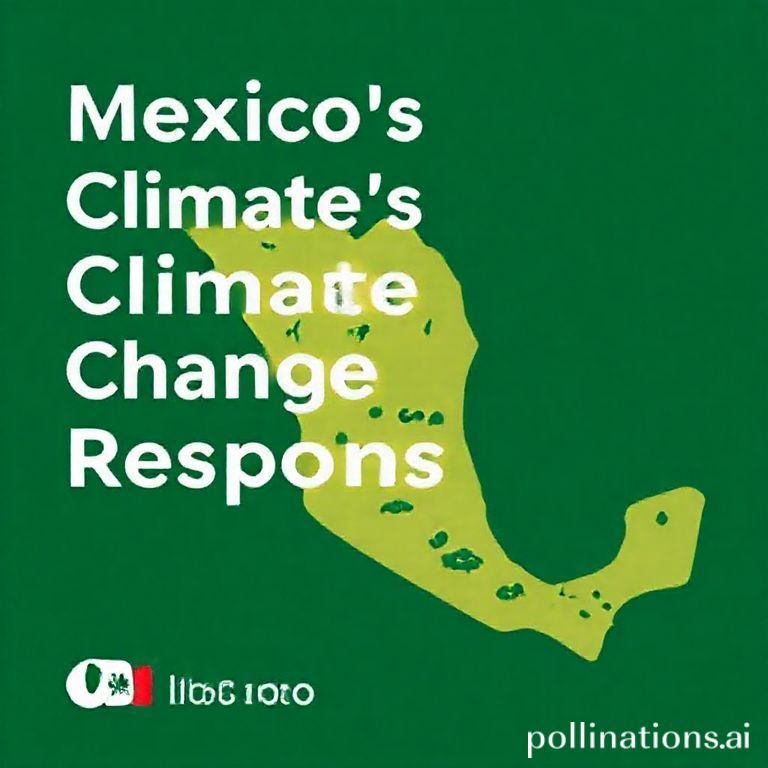Climate change is a global challenge, and Mexico, with its diverse ecosystems and vibrant communities, is feeling its effects acutely. From rising sea levels threatening coastal regions to prolonged droughts impacting agriculture, the urgency to address climate change is undeniable. But how exactly is Mexico tackling this complex issue? This article delves into the strategies, initiatives, and challenges that define Mexico’s response to climate change, offering an inside look at the country’s efforts to build a more sustainable future.
Mexico recognizes the need for a multifaceted approach that combines mitigation (reducing greenhouse gas emissions) with adaptation (adjusting to the impacts of climate change). The government, along with various organizations and communities, is actively working to implement policies and projects that promote environmental protection and resilience. This involves investing in renewable energy, promoting sustainable agriculture, protecting forests, and developing infrastructure that can withstand the effects of a changing climate.
National Climate Change Strategy
Mexico’s commitment to addressing climate change is reflected in its National Climate Change Strategy (NCCS). This comprehensive plan outlines the country’s goals for reducing greenhouse gas emissions and adapting to the impacts of climate change. The NCCS serves as a framework for coordinating efforts across different sectors and levels of government, ensuring a unified and strategic approach.
Key Priorities of the NCCS
- Mitigation: Reducing greenhouse gas emissions through the promotion of renewable energy, energy efficiency, and sustainable transportation.
- Adaptation: Enhancing the resilience of communities and ecosystems to the impacts of climate change, such as droughts, floods, and sea-level rise.
- Capacity Building: Strengthening the technical and institutional capacity to address climate change effectively.
- International Cooperation: Collaborating with other countries to advance global climate action.
Renewable Energy Investments
One of the key pillars of Mexico’s climate change strategy is the transition to renewable energy sources. The country has significant potential for solar, wind, geothermal, and hydropower energy, and the government is actively promoting investments in these areas. By increasing the share of renewable energy in its energy mix, Mexico aims to reduce its reliance on fossil fuels and lower its carbon footprint. Several large-scale solar and wind farms have already been established, and more projects are in the pipeline.
Challenges in Renewable Energy Transition
- Infrastructure development: Building new transmission lines and upgrading existing infrastructure to accommodate renewable energy sources.
- Regulatory framework: Establishing clear and supportive regulations to encourage private sector investment in renewable energy projects.
- Social acceptance: Addressing potential concerns from local communities about the environmental and social impacts of renewable energy projects.
Sustainable Agriculture Practices
Agriculture is a vital sector of the Mexican economy, but it is also vulnerable to the impacts of climate change. Prolonged droughts, extreme weather events, and changes in temperature can significantly impact crop yields and food security. To address these challenges, Mexico is promoting sustainable agriculture practices that enhance resilience and reduce greenhouse gas emissions.
Examples of Sustainable Agriculture Initiatives
- Agroforestry: Integrating trees into agricultural systems to improve soil health, conserve water, and sequester carbon.
- Conservation Agriculture: Minimizing soil disturbance, maintaining soil cover, and diversifying crops to improve soil fertility and reduce erosion.
- Water-Efficient Irrigation: Using drip irrigation and other water-saving technologies to reduce water consumption and improve crop yields.
Forest Conservation Efforts
Mexico’s forests play a crucial role in mitigating climate change by absorbing carbon dioxide from the atmosphere. However, deforestation and forest degradation are significant challenges. To protect its forests, Mexico has implemented various conservation programs, including reforestation initiatives, protected areas, and community-based forest management.
Community Involvement in Forest Management
Recognizing the importance of local communities in forest conservation, Mexico has implemented programs that empower communities to manage and protect their forests sustainably. These programs provide communities with the resources and training they need to develop sustainable forestry practices, generate income from forest products, and protect their traditional livelihoods.
Conclusion
Mexico’s response to climate change is a complex and evolving process. While the country faces significant challenges, it is also making progress in reducing greenhouse gas emissions, adapting to the impacts of climate change, and building a more sustainable future. Through its National Climate Change Strategy, investments in renewable energy, promotion of sustainable agriculture, and forest conservation efforts, Mexico is demonstrating its commitment to addressing this global challenge. Continued collaboration, innovation, and community involvement will be essential to ensuring the success of these efforts and creating a climate-resilient Mexico for generations to come.
If you found this information valuable, share this article with your friends and family, and explore other insightful pieces on Life in Mexico!
IMAGE: A vibrant, eye-level shot showcasing a modern solar farm in the Mexican countryside under a bright, sunny sky. In the background, rolling hills and a clear blue sky create a sense of spaciousness and hope. The solar panels are neatly arranged, reflecting the sunlight. The overall mood is optimistic and forward-looking, with warm colors dominating the scene. The style is realistic and documentary-like, emphasizing the scale and impact of renewable energy in Mexico.


